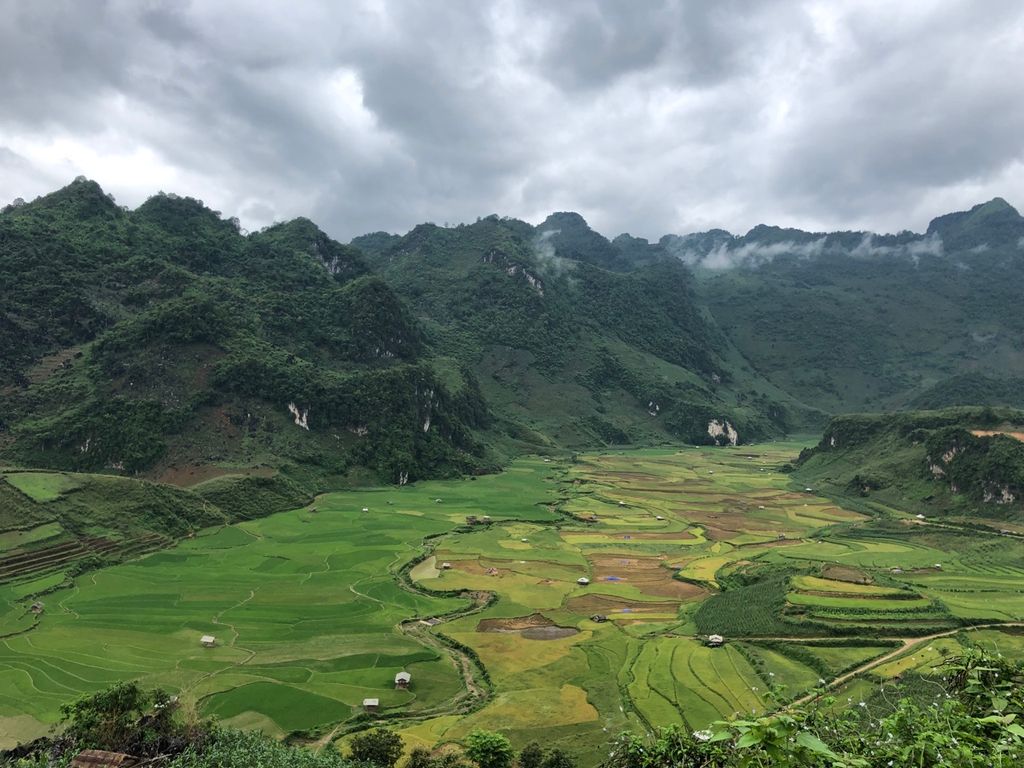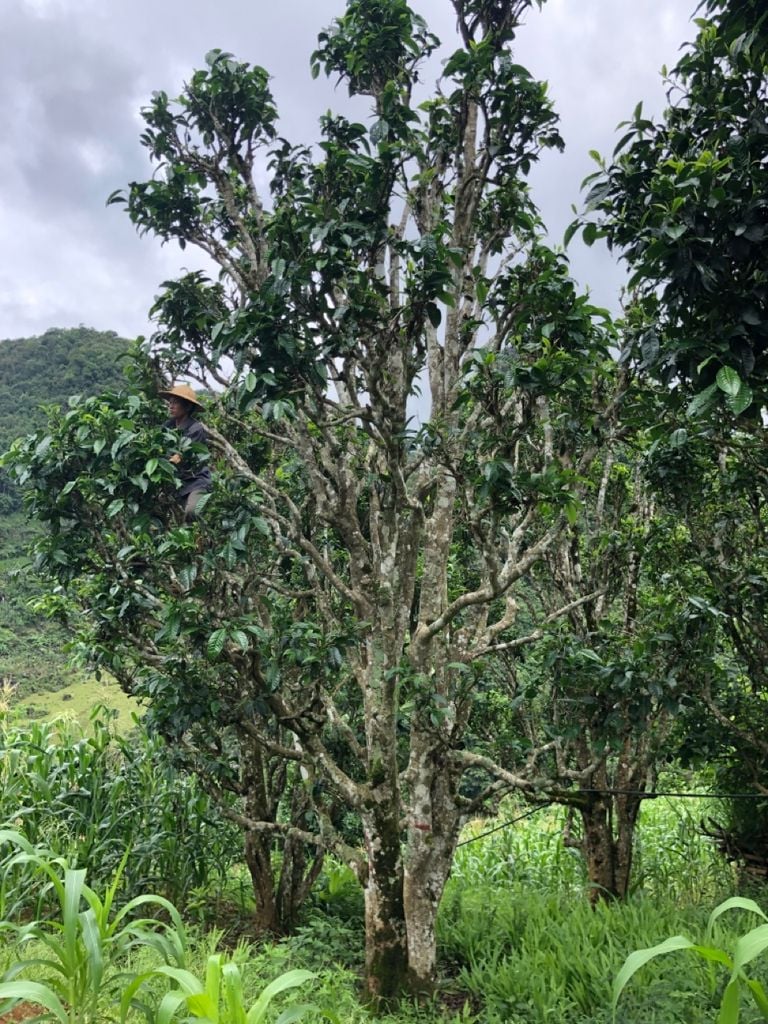Fourth Cup: Snow Shan tea in Tua Chua, Dien Bien – A breath of life among the highland’s rocks
Dien Bien is a mountainous province in the Northwest region of Vietnam. Among the total area of 9,562.9 km2, more than half lies 1,000 m above sea level and 70% is sloped, hilly terrains, divided by numerous mountain ranges, rivers and streams. Around 95.6% (or 594.93 ha) of the total tea plantation area (622.31 ha) in Dien Bien is found in the highlands north of Tua Chua district, and elsewhere in the communes of Sin Chai, Sinh Phinh, Ta Sin Thang and Ta Phin. These communes, with an average altitude of 900 – 1,200 m above sea level, average temperature of 21 - 330C, average annual rainfall of 1,620 – 2,080 mm and humidity of 83 – 85%, are especially ideal for the development of tea trees. According to researches, among the 8,000 ancient tea trees over 300 years old, a great number clusters in Sin Chai, Ta Sin Thang and Ta Phin communes. |
|
From those observations, one can say that the complex geographical features and not-too-harsh climate have created a strong and unique identity for the taste of Snow Shan tea in Tua Chua in particular, and in Dien Bien in general. Rising 1,400 m above sea level, Tua Chua district (Dien Bien) is where the tea trees thrive naturally with no human cares nor fertilizers. Surviving the course of hundreds of years, the trees have adapted to the soil and climate, overcoming the elements and pests.
In Tua Chua district, there are 594.93 ha of tea trees, with 30 ha of about 8,000 ancient tea trees, hundreds of years old. Tea plantation mostly concentrates in the 4 northern communes of Tua Chua district: Sinh Phin, Ta Phin, Ta Sin Thang and Sin Chai. Every year, the whole district produces over 800 tons of fresh tea buds, equaling 15 tons of dried tea buds. Sin Chai is the commune with the largest number of ancient Snow Shan tea trees in Tua Chua district, around 4,000 trees. These ancient tea trees have been part of the H’Mông people’s life throughout generations, and they continue to yield fresh green tea buds and income for the local. The people here are born to the sight of tea trees, grow up with the tea trees, tender them, plant more trees, and pick the leaves to produce fine teas as guided by their forefathers.In this land, Snow Shan is harvested from March to October of the Lunar Year, carefully selected from young tea buds, still dipped in morning dew and covered in a light coat of white snow. Picked and roasted completely manually, the tea preserves the deep aroma-flavour of the Northern mountains and forests. |
|
Snow Shan tea in Tua Chua, Dien Bien strikes the taster, most certainly, with a force of color and flavor, and a rich signature. Its water is bright and clear; it is imbued with a smooth yet bitter taste of wild plants, followed by a sweet, warm, contemplative aftertaste that lasts many brews.
 English
English
 Vietnamese
Vietnamese


